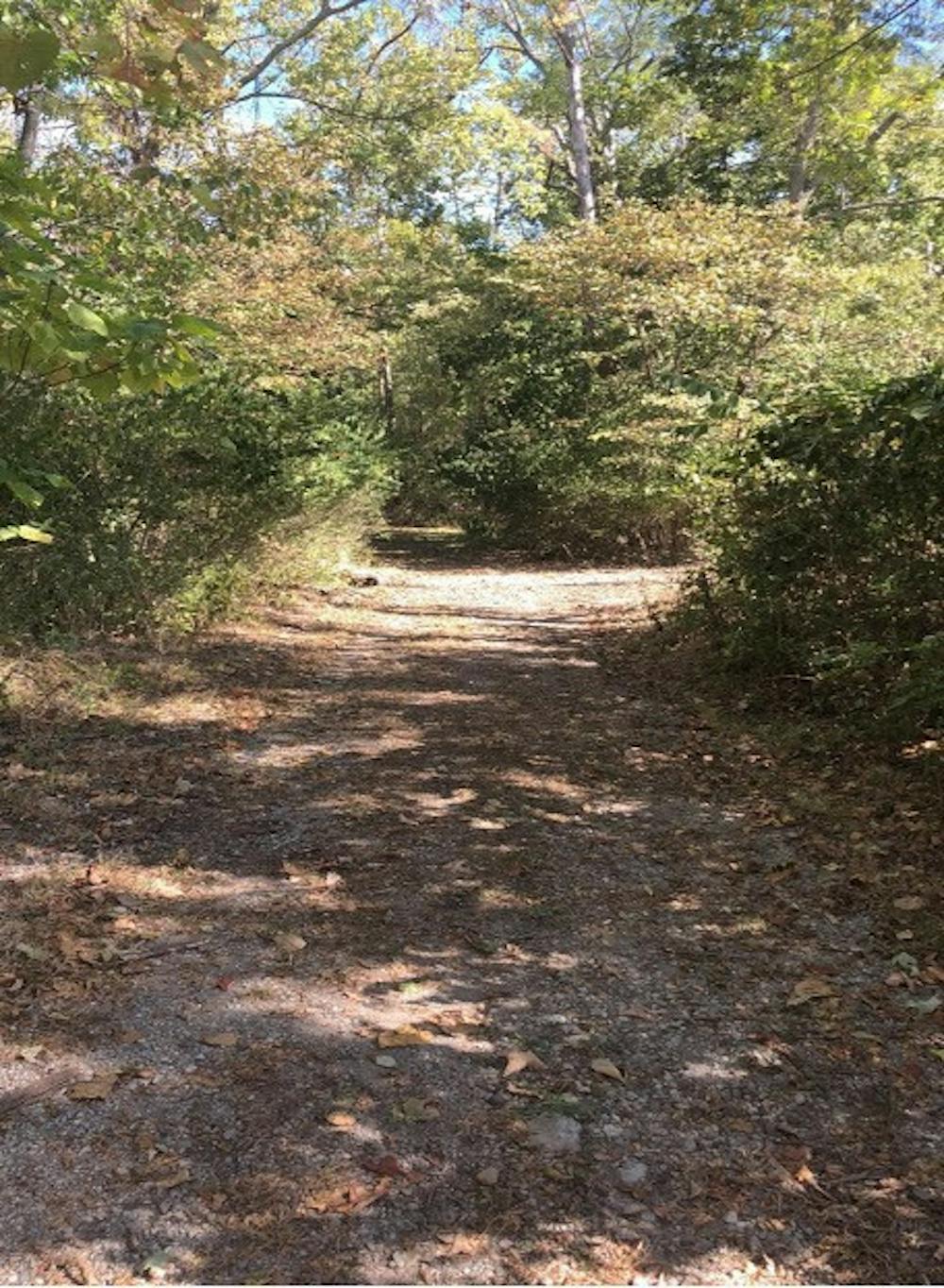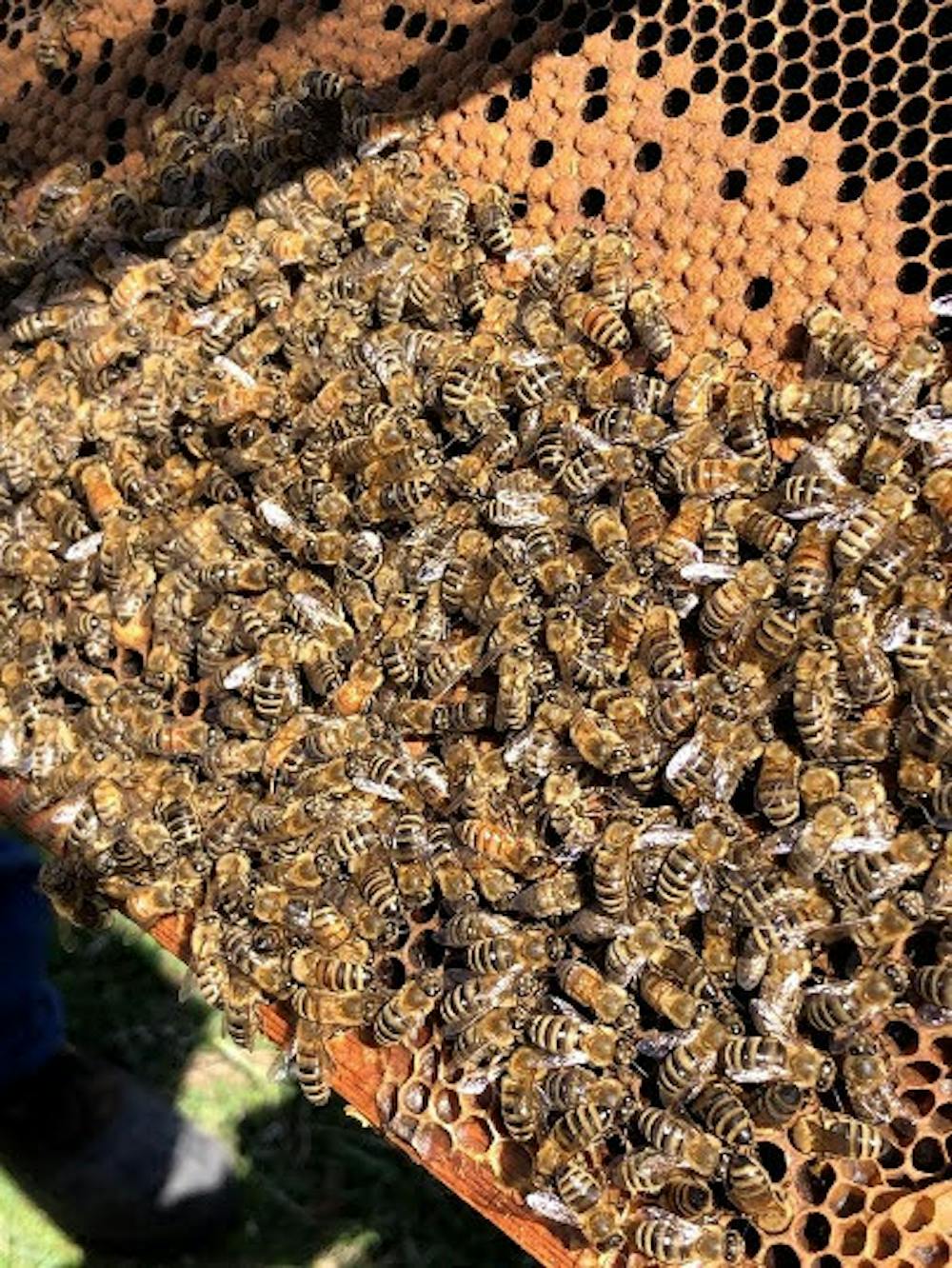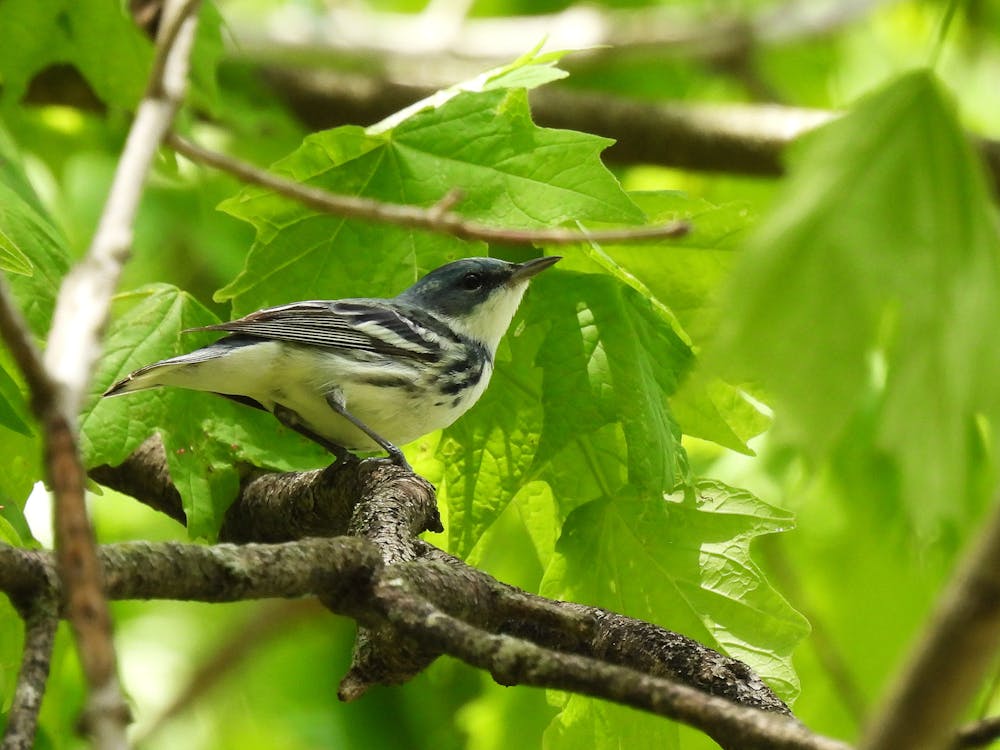By: Jillian Inks
It was early October, the crisp, cool air of autumn barely present to cool me from the sun rays of late summer still shining through the trees’ leaves. Vast arrangements of dried multi-leaves covered the route I trekked through Western Woods near Miami University’s Belk greenhouse. The purpose of this pathway, or why it's even gated, remains a mystery to many students. Yet, as a new member to Miami's Apiculture Society, I knew exactly what awaited at the end of this trial; it was hive inspection day.
Hive inspections are similar to having a biweekly doctor’s check-up. During these inspections, beekeepers, or apiculturists, take off the bee box’s lid, apply smoke to each of the frames, and carefully remove each frame from the box to inspect the brood’s health and activity of the queen bee.
Apiculture is the technical term for beekeeping. Given its Latin roots, beekeeping has been around 5,000 years. I was 16 years old when I learned the “buzz” about the wonders and issues of beekeeping and honey bees from reading a 2017 July edition of Costco Connection magazine after running errands with my mother. From there I was hooked.
Three years later, I joined the Miami Apiculture Society during my freshman year in Oxford. Founded in 2017, the club has been devoted to sharing, teaching and spreading awareness about the importance of honey bees as pollinators.
Pollinators are animals that collect pollen from one plant then transfer it to another. In doing so, the plants become fertilized and will be more likely to yield bountiful fruit or seeds once in bloom. Bees especially are the most important pollinators of them all as their work annually equates to $40 billion worth of products in the U.S.
In 2021, the club continues to meet despite the pandemic. Sophie Esposito,19, was a freshman like me when she first became interested in joining the Miami Apiculture Society. Now, as executive secretary, she feels strongly about spreading awareness about bees and what this club has to offer. As people who once knew little about bees and their impact on the environment, Sophie and I did not know what to expect at our first hive inspection.
“I remember I was really freaked out to hold the smoker at my first hive inspection, but everyone's really chill. They don't make you do anything that you don't want to; you can completely just stand there and watch as they take care of the bees. That’s cool and a learning experience in and of itself,” recalled Sophie.
I can relate with Sophie given that I was nervous to even stand in front of the barrier that was placed near the bee box during my first hive inspection. Yet, despite our anxiety in this situation, both Sophie and I pushed through our fears of being stung to loving what these tiny pollinators are capable of doing for our ecosystem. Soon, we began wanting to learn every aspect of beekeeping and how to help the bees thrive throughout spring and fall.
It’s crucial to mention the master beekeeper and honey bee researcher, Alexander Zomchek, 62, and Miami Apiculture Society’s most adamant educator for the ways of beekeeping and monitoring. Having been the inspiration behind the society’s creation, Zomchek has spent each fall and spring inspecting the hive alongside his fellow members and students. I remember watching him delicately remove each frame from the bee box, I stood bewildered at what I was seeing for the first time. We were surrounded in a collective but orderly swarm of bees, like being in the center of a hurricane.
“If the swarm is moving on to the final hive home, the choreographed mass moves along like a murmuration of birds in flight or like scuba diving in a school of fish. A circling ‘bait-ball’ is more accurate as the bees must remain in flight yet remain together. I have spent a lifetime amongst bees and still find swarms singularly captivating,” explained Zomchek in what it's like to be in the center of a honey bee swarm.
Enjoy what you're reading?
Signup for our newsletter
Still, even with that analogy most would consider this situation more alarming than amazing. Yet, as crazy as it seems, not a single person got stung that day. You may even be surprised to find a lost honey bee crawling underneath your shirt, like I did that day.
Even with stingers, honey bees are docile creatures, rarely expressing aggression unless provoked considerably by others. It’s like any golden rule when dealing with animals: be nice to them and they will be nice to you. I can barely imagine or even consider bees as a threat to us more so than we are to them. Yet, there are several threats to bee species’ decline across America. Most notable being fungal viruses/diseases, agricultural pesticides and parasitic Varroa mites all contribute to the mortality rate increase of these insects. A study done by the Bee Informed Partnership revealed that between April 2019 and April 2020, there was a 44 percent decrease in bee colony populations across the country because of these threats. In other words, if a significant amount of bees are gone, it causes a domino effect for the rest of the ecosystem. I will always consider these tiny creatures as wonderful beings and ones in dire need of our support now more than ever before.
Photos courtesy of Jillian Inks.






